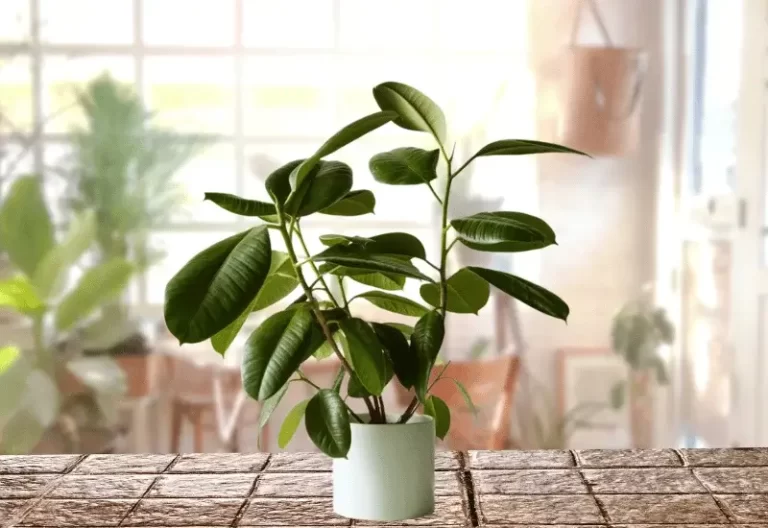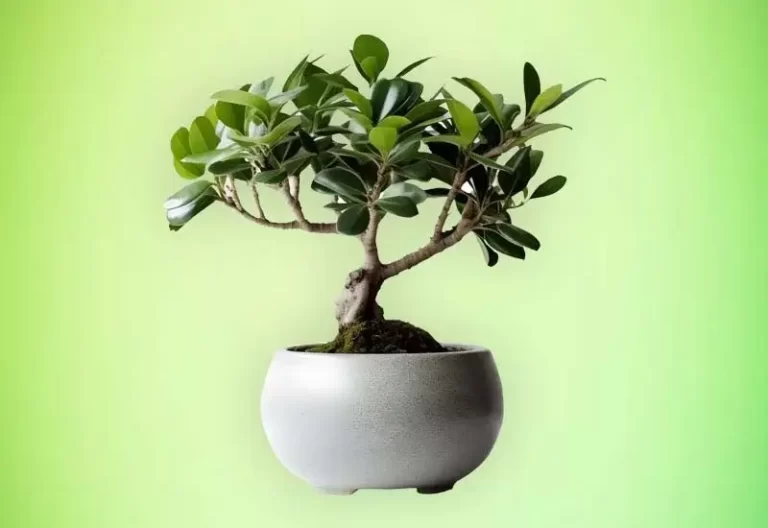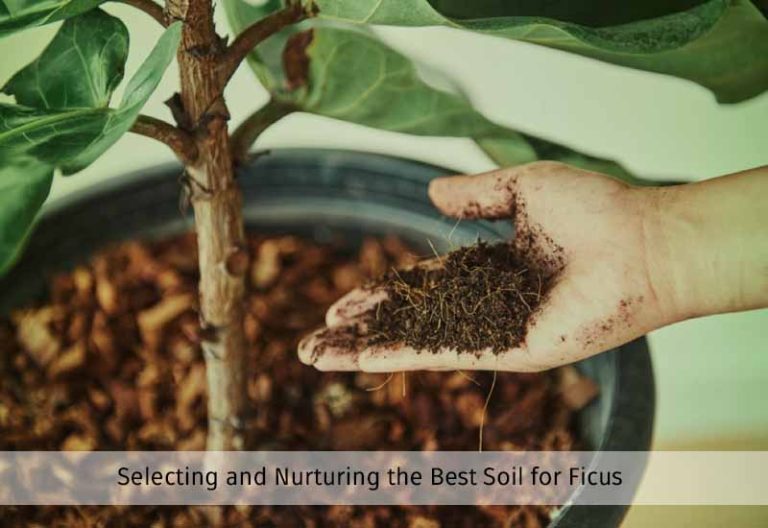15 Types of Ficus Outdoor Plant Growth and Care
While Ficus plants have long been cherished as indoor companions, their outdoor counterparts hold their charm and allure. Ficus outdoor plants have earned a special place in gardens and landscapes worldwide with their striking foliage, resilience, and adaptability.
Types of Ficus Outdoor Plant
Ficus Religiosa (Sacred Fig)
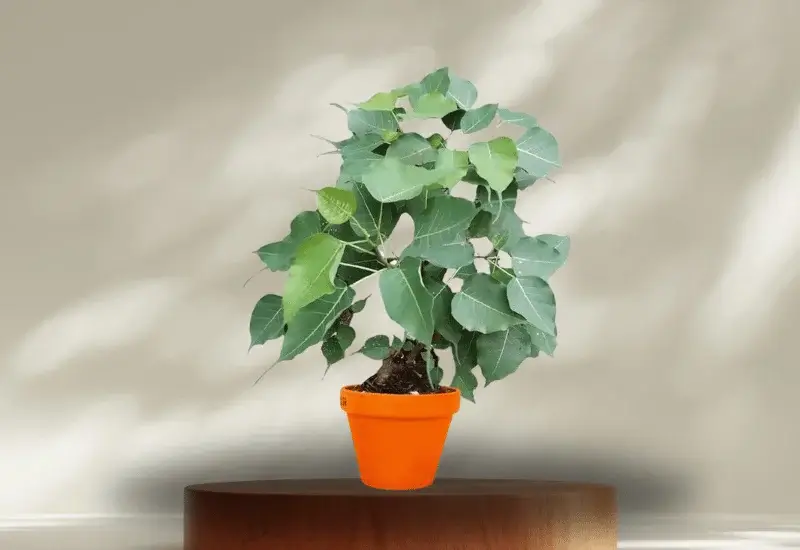
The Sacred Fig, also known as the Bodhi Tree, holds immense cultural and spiritual significance in various traditions. It features heart-shaped leaves and a graceful appearance, making it a symbol of peace and enlightenment.
Care Tips for Sacred Fig
Light: Thrives in full sun but can tolerate partial shade.
Watering: Keep the soil consistently moist, especially during the growing season.
Soil: Well-draining, fertile soil is ideal.
Temperature: Sacred Fig thrives in warm and tropical climates. It prefers temperatures between 65°F to 95°F (18°C to 35°C) and is not frost-tolerant.
Ficus Virens (White Fig)
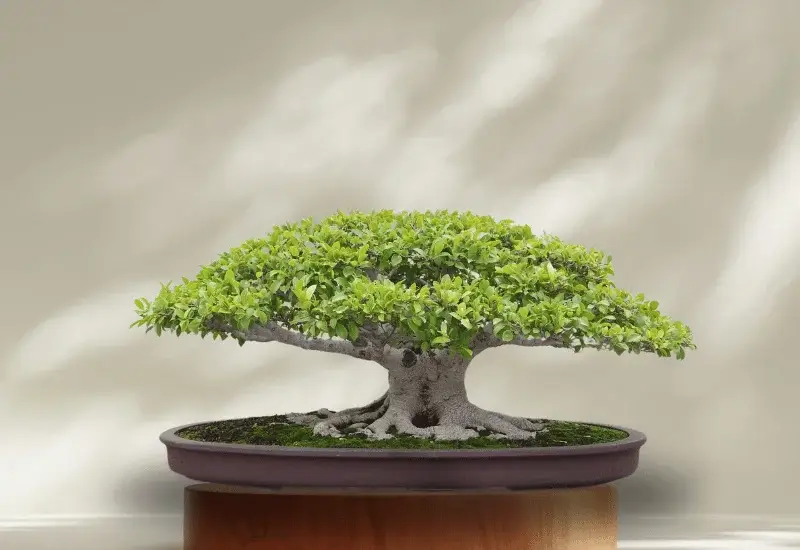
The White Fig, with its large, lobed leaves and striking presence, adds a touch of grandeur to any outdoor setting. It’s prized for its ornamental value and the shade it provides.
Care Tips for White Fig
Light: Prefers full sun for optimal growth.
Watering: Allow the soil to dry out slightly between waterings.
Soil: Well-draining soil with organic matter.
Temperature: White Fig also prefers warm and tropical climates. It does well in temperatures ranging from 60°F to 90°F (15°C to 32°C) and is sensitive to frost.
Ficus Carica (Common Fig)

The Common Fig is renowned for its delicious fruits, a treat for the taste buds, and a beautiful addition to the garden. Its lush leaves and spreading growth habit make it an excellent choice for outdoor cultivation.
Care Tips for Common Fig
Light: Thrives in full sun and produces better fruit with ample sunlight.
Watering: Keep the soil consistently moist, especially during the growing season.
Soil: Well-draining soil with good aeration.
Temperature: Common Fig enjoys a Mediterranean climate with warm to hot summers and mild winters. It can tolerate temperatures between 20°F to 100°F (-6°C to 38°C) but prefers milder conditions.
Ficus Racemosa (Cluster Fig)
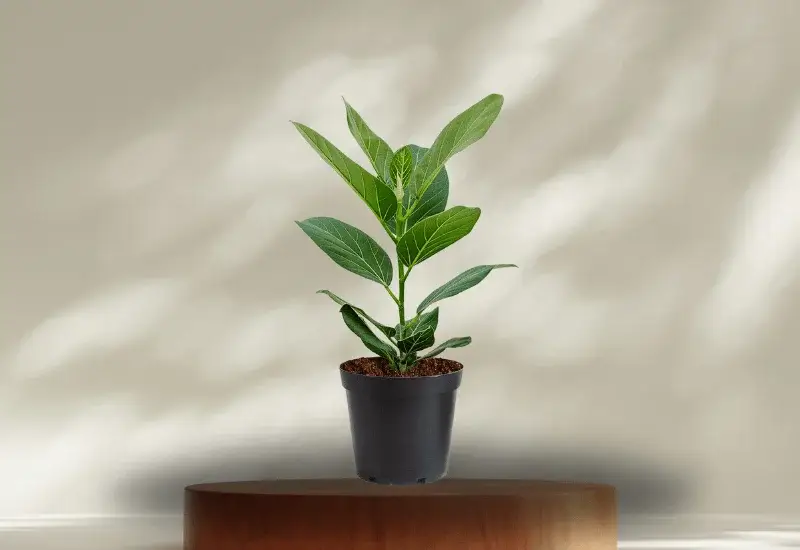
The Cluster Fig is celebrated for its distinctive appearance, featuring figs that grow in dense clusters along its branches. It’s known for providing shade and attracting wildlife, making it a cherished addition to outdoor spaces.
Care Tips for Cluster Fig
Light: Thrives in full sun to partial shade.
Watering: Maintain regular watering, especially during dry periods.
Soil: Well-draining soil with good organic content.
Temperature: Cluster Fig thrives in warm and tropical climates. It prefers temperatures between 68°F to 95°F (20°C to 35°C) and should be protected from frost.
Ficus Benjamina var. ‘Danielle’ (Danielle Weeping Fig)
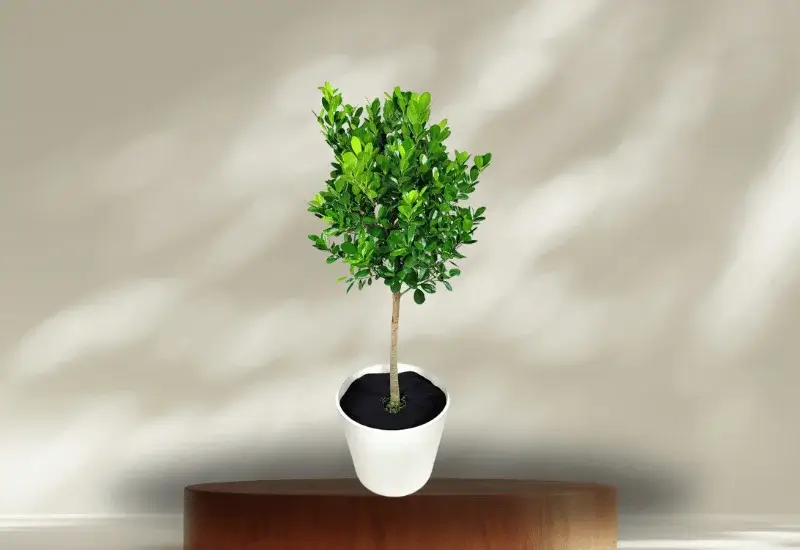
The Danielle Weeping Fig is a charming variety of the iconic Ficus benjamina. Its gracefully drooping branches and glossy foliage add a touch of elegance to outdoor landscapes, making it a favorite among gardeners.
Care Tips for Danielle Weeping Fig
Light: Prefers bright, indirect light to partial shade.
Watering: Keep the soil consistently moist, avoiding waterlogged conditions.
Soil: Well-draining soil with organic matter.
Temperature: Danielle Weeping Fig prefers indoor or outdoor temperatures between 65°F to 75°F (18°C to 24°C) and is sensitive to cold drafts and frost.
Ficus Macrophylla (Moreton Bay Fig)

The Moreton Bay Fig, with its massive, spreading canopy and impressive aerial roots, creates an awe-inspiring presence in outdoor settings. It’s revered for its grandeur and longevity.
Care Tips for Moreton Bay Fig
Light: Flourishes in full sun to partial shade.
Watering: Maintain consistent moisture in the soil.
Soil: Well-draining, fertile soil is ideal.
Temperature: Moreton Bay Fig thrives in warm and temperate climates. It can tolerate temperatures between 20°F to 100°F (-6°C to 38°C) but prefers milder conditions.
Ficus Benjamina (Weeping Fig)

The Weeping Fig is instantly recognizable for its gracefully drooping branches and delicate, elliptical leaves. Its elegant appearance and air-purifying qualities make it a favorite indoor space choice.
Care Tips for Weeping Fig
Light: Flourishes in bright, indirect light but can adapt to moderate light conditions.
Watering: Allow the top inch of soil to dry out between waterings.
Soil: A well-draining potting mix is ideal.
Temperature: Weeping Fig prefers indoor or outdoor temperatures between 65°F to 75°F (18°C to 24°C) and is sensitive to cold drafts and frost.
Ficus Lyrata (Fiddle Leaf Fig)

The Fiddle Leaf Fig has gained fame for its large, violin-shaped leaves that create a bold and dramatic statement. Its majestic appearance and air-purifying capabilities make it a prized addition to interiors.
Care Tips for Fiddle Leaf Fig
Light: Prefers bright, indirect light but can tolerate moderate light conditions.
Watering: Keep the soil consistently moist but not waterlogged.
Soil: Well-draining potting mix with good aeration.
Temperature: Fiddle Leaf Fig thrives in indoor or outdoor temperatures between 65°F to 75°F (18°C to 24°C). It is sensitive to cold drafts and frost.
Ficus Elastica (Rubber Plant)
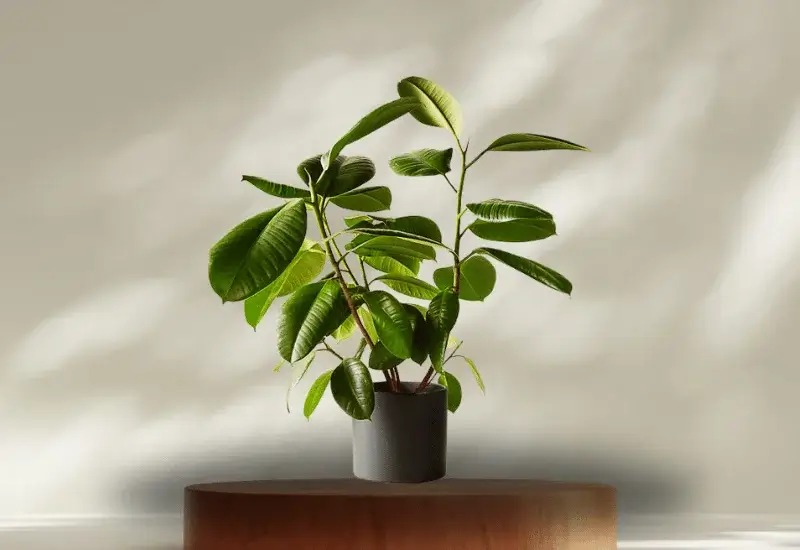
The Rubber Plant is known for its sturdy, glossy leaves and upright growth habit. Its resilience and adaptability have made it a beloved choice for novice and experienced indoor gardeners.
Care Tips for Rubber Plant
Light: Thrives in bright, indirect light but can tolerate lower light levels.
Watering: Allow the soil to dry out between waterings partially.
Soil: Well-draining potting mix enriched with organic matter.
Temperature: Rubber Plant prefers indoor or outdoor temperatures between 65°F to 80°F (18°C to 27°C). It is sensitive to cold drafts and frost.
Ficus Microcarpa (Indian Laurel)

Indian Laurel is celebrated for its dense, dark green foliage and strong upright growth, creating a sense of timeless elegance. It’s often chosen for its ability to create privacy and a serene atmosphere in outdoor settings.
Care Tips for Indian Laurel
Light: Flourishes in full sun to partial shade.
Watering: Maintain regular watering, especially during dry periods.
Soil: Well-draining soil with good organic content.
Temperature: Indian Laurel thrives in various temperatures but prefers moderate to warm climates. It can withstand occasional cold spells but may suffer damage in frost-prone regions.
Ficus Retusa (Ginseng Ficus)
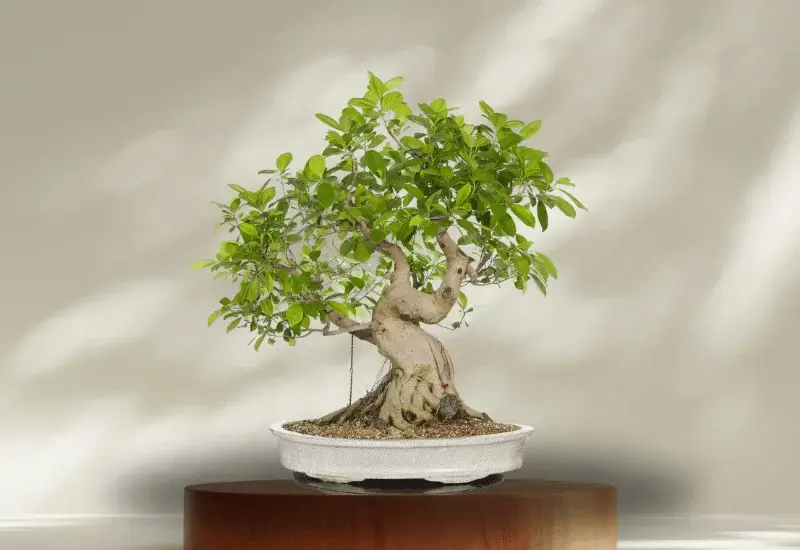
Ginseng Ficus is instantly recognizable for its bulbous, gnarled roots that resemble the ginseng herb, giving it its name. Its glossy, dark green leaves and bonsai-like appearance make it a captivating choice for outdoor gardeners.
Care Tips for Ginseng Ficus
Light: Thrives in full sun to partial shade.
Watering: Keep the soil consistently moist, especially during the growing season.
Soil: Well-draining soil is preferred.
Temperature: Ginseng Ficus prefers moderate to warm temperatures and should be protected from cold drafts or freezing conditions. It can tolerate some temperature fluctuations but not extreme cold.
Ficus Altissima (Council Tree)
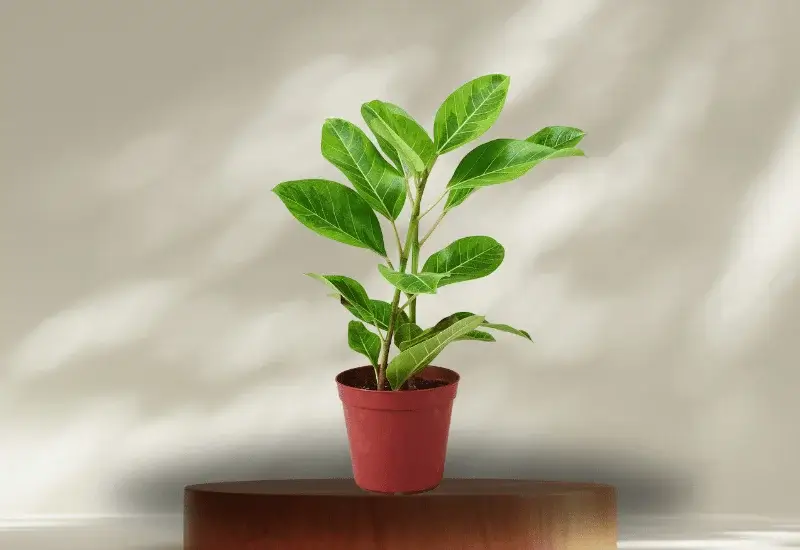
The Council Tree is known for its tall, columnar shape and striking variegated leaves with bold yellow and green patterns. It adds a touch of sophistication and drama to outdoor landscapes.
Care Tips for Council Tree
Light: Prefers full sun to partial shade.
Watering: Allow the soil to dry out slightly between waterings.
Soil: Well-draining soil with organic matter.
Temperature: Council Tree thrives in moderate to warm climates. It’s not frost-tolerant and should be protected from freezing temperatures.
Ficus Pumila (Creeping Fig)

Creeping Fig is beloved for its small, heart-shaped leaves and trailing growth habit. It’s a versatile choice for those seeking a cascading or climbing plant that adds a charming touch to their outdoor spaces.
Care Tips for Creeping Fig
Light: Flourishes in bright, indirect light but adapts to lower light levels.
Watering: Keep the soil evenly moist, ensuring proper drainage.
Soil: Well-draining soil enriched with organic matter.
Temperature: Creeping Fig prefers moderate temperatures between 65°F to 75°F (18°C to 24°C). It can tolerate some temperature variations but should be protected from extreme cold.
Ficus Natalensis (Natal Fig)
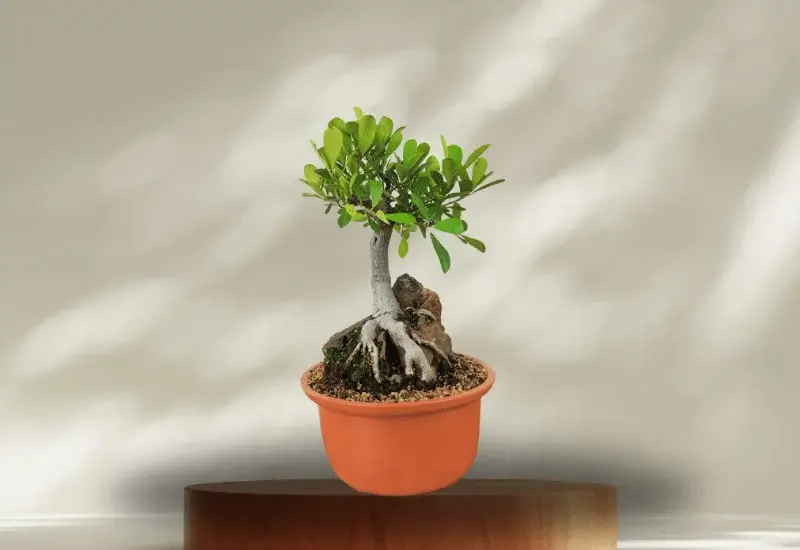
Natal Fig is celebrated for its delicate, deeply lobed leaves that create an intricate and textured look. Its graceful growth habit and resilience make it a favored choice for those looking to add a touch of sophistication to their outdoor gardens.
Care Tips for Natal Fig
Light: Prefers bright, indirect light but can adapt to lower light conditions.
Watering: Keep the soil consistently moist but not waterlogged.
Soil: Well-draining soil with good aeration.
Temperature: Natal Fig thrives in moderate to warm temperatures between 60°F to 85°F (15°C to 29°C) and should be protected from frost and freezing conditions.
Ficus Benghalensis (Banyan Tree)

The Banyan Tree is renowned for its grandeur, with aerial roots that create an enchanting, forest-like atmosphere. Its unique appearance and symbolic significance make it a captivating choice for outdoor gardeners.
Care Tips for Banyan Tree
Light: Thrives in bright, indirect light but can adapt to lower light conditions.
Watering: Allow the soil to dry out between waterings partially.
Soil: Well-draining soil with added organic matter.
Temperature: Banyan Tree prefers tropical and subtropical climates with temperatures between 65°F to 100°F (18°C to 38°C). It is sensitive to cold and frost.
Benefits of Ficus Plants in Outdoor Spaces
Ficus plants, both the ornamental and fig-bearing varieties, offer several advantages when incorporated into outdoor spaces:
- Shade and Privacy: They create cooling shade and act as natural privacy screens.
- Aesthetic Appeal: Their lush foliage enhances outdoor aesthetics.
- Air Quality: Ficus trees purify outdoor air by filtering pollutants.
- Wildlife Attraction: Fig-bearing Ficus varieties attract wildlife.
- Low Maintenance: They require minimal care once established.
- Adaptability: Thriving in various environments, they’re versatile additions.
- Sound Barrier: Dense foliage reduces outdoor noise.
- Seasonal Interest: Some produce edible fruits, adding a tasty element.
- Drought Tolerance: Many tolerate sporadic watering.
- Longevity: With proper care, they provide enduring beauty for generations.
Whether you’re looking to create a shady retreat, enhance the visual appeal of your garden, or improve outdoor air quality, Ficus plants have much to offer in outdoor spaces. Their versatility and natural charm make them valuable to any outdoor environment.
Common Issues with Ficus Plants and Their Solutions
Ficus plants, indoors or outdoors, can face various issues. Here are some common problems and effective solutions to help you maintain healthy and thriving Ficus plants:
Leaf Drop:
Issue:
Ficus plants, especially Ficus Benjamina, are known for dropping leaves when stressed, which can be alarming to growers.
Solution:
- Maintain consistent watering and light conditions.
- Avoid sudden changes in temperature or drafts.
- Be patient, as Ficus plants often acclimate and recover.
Yellowing Leaves:
Issue:
Yellowing leaves can indicate overwatering or underwatering, nutrient deficiencies, or pests.
Solution:
- Adjust your watering routine, allowing the soil to dry slightly between waterings.
- Ensure proper fertilization and consider regular pest inspections and treatments.
Posts:
Issue:
Ficus plants can be susceptible to common pests like mealybugs, spider mites, and scale insects.
Solution:
- Regularly inspect your plants for signs of pests.
- Use natural remedies like neem oil or insecticidal soap to control infestations.
- Isolate infested plants to prevent spreading.
Root Rot
Issue:
Overwatering or poor drainage can lead to root rot, causing yellowing leaves and wilting.
Solution:
- Ensure proper drainage by using well-draining soil and pots with drainage holes.
- Allow the soil to dry slightly between waterings and avoid waterlogged conditions.
Fertilization Issues
Issue:
Over-fertilization can lead to salt buildup in the soil, while under-fertilization can result in nutrient deficiencies.
Solution:
- Follow a balanced fertilization schedule during the growing season, using a balanced liquid fertilizer.
- Flush the soil occasionally to remove excess salts.
Pruning and Maintenance
Issue:
Neglecting pruning and maintenance can lead to leggy or overgrown Ficus plants.
Solution:
- Prune your Ficus plants to maintain their desired shape and size.
- Remove dead or diseased branches.
- Regularly clean and dust the leaves to prevent dust buildup.
Environmental Changes
Issue:
Ficus plants are sensitive to environmental changes, such as moving them to a new location or exposing them to drafts.
Solution:
- Minimize sudden changes in light, temperature, or humidity.
- When moving a Ficus, do so gradually to allow it to acclimate.
Leaf Discoloration
Issue:
Ficus leaves may develop brown tips or edges due to dry air or insufficient humidity.
Solution:
- Increase humidity levels by misting the plant, using a humidity tray, or placing a humidifier nearby.
Ficus Specific Issues
Issue:
Certain Ficus species, like Ficus Lyrata (Fiddle Leaf Fig), may be prone to specific problems such as leaf browning.
Solution:
- Research the specific care requirements for your Ficus variety and address issues accordingly.
Final Words
Ficus plants are versatile and captivating additions to both indoor and outdoor spaces. With proper care, attention to their unique needs, and swift resolution of common issues, your Ficus plants can thrive, enriching your environment with natural beauty and vitality.
FAQs about Ficus Plants
1. Are Ficus plants suitable for beginners?
Many Ficus varieties are beginner-friendly due to their adaptability and relatively low maintenance requirements.
2. How often should I water my Ficus plant?
Allow the top inch (2.5 cm) of soil to dry out between waterings, but ensure thorough watering when needed.
3. What’s causing my Ficus leaves to drop?
Leaf drops can result from stress due to changes in lighting, overwatering, underwatering, or sudden environmental changes. Maintain stable conditions and adjust care as needed.
4. Can I grow Ficus plants in low-light conditions?
Some Ficus species, like Ficus elastica (Rubber Plant), can tolerate lower light but thrive in bright, indirect light.
5. How do I deal with pests on my Ficus plant?
Inspect your plant regularly for pests and treat infestations with natural remedies like neem oil or insecticidal soap.
6. When should I report my Ficus plant?
Repot when the plant becomes root-bound or when growth slows. Typically, every 1-2 years is sufficient.
7. Can I grow Ficus plants outdoors?
Many Ficus varieties can thrive in outdoor gardens, provided they are suited to your local climate and protected from frost.
8. Why are the leaves on my Ficus turning yellow?
Yellowing leaves can be due to overwatering, underwatering, nutrient deficiencies, or pests. Adjust care and inspect for issues accordingly.
9. How can I increase humidity for my indoor Ficus plant?
Use a humidity tray room humidifier or regularly mist the plant’s leaves to raise humidity levels.
10. What’s the best fertilizer for Ficus plants?
Use a balanced liquid fertilizer during the growing season (spring and summer), diluted according to package instructions.


